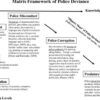Follow
I first learned about Kaizen about a year ago when I started working for the State of Arizona. During our weekly huddle meetings, my then-supervisor would talk about Kaizens and how the agency director was a big fan of them. The director encouraged all employees to think about being more efficient in our processes as a government agency to provide better public service. Some of the other benefits of improving our processes could eliminate waste, solve problems, and become more fiscally responsible for using public funds.
I often chuckle at myself each time I hear one of the managers say, “you ask good questions.” I wonder if they are saying, “you ask too many questions!” However, asking “good” questions, and having a manager encourage the team to develop process improvements empowered us to develop ideas for kaizens individually and collectively. I will share these kaizens in the next blog post.
So What Is Kaizen?
Kaizen is a Japanese term meaning “change for the better” or “continuous improvement.” It is a Japanese business philosophy regarding the processes that continuously improve operations and involve all employees. Kaizen sees improvement in productivity as a gradual and systematic process.
The concept of Kaizen encompasses a wide range of ideas. It involves making the work environment more efficient and effective by creating a team atmosphere, improving everyday procedures, ensuring employee engagement, and making a job more fulfilling, less tiring, and safer.
KEY TAKEAWAYS
- Kaizen is a Japanese business philosophy that focuses on gradually improving productivity by involving all employees and making the work environment more efficient.
- Kaizen translates to “change for the better” or “continuous improvement.”
- The small changes used in Kaizen can involve quality control, just-in-time delivery, standardized work, efficient equipment, and the elimination of waste.
- Changes can come from any employee anytime and don’t have to happen slowly, although Kaizen recognizes that small changes now can have big future impacts.
Understanding Kaizen
Some of the key objectives of the kaizen philosophy include quality control, just-in-time delivery, standardized work, the use of efficient equipment, and the elimination of waste. The overall goal of Kaizen is to make small changes over a period of time to create improvements within a company. That doesn’t mean alterations happen slowly; it simply recognizes that small changes now can have huge impacts in the future. Improvements can come from any employee at any time. The idea is that everyone has a stake in the company’s success and everyone should strive, at all times, to help make the business model better.
Many companies have adopted the kaizen concept. Most notably, Toyota employs the kaizen philosophy within its organization and has esteemed it as one of its core values. Within its production system, Toyota encourages and empowers all employees to identify potential improvement areas and create viable solutions.
Fast Fact
The process of identifying solutions is called “kaizen blitz.”
Requirements for Kaizen
Kaizen’s traditional Japanese ideas follow five basic tenets: teamwork, personal discipline, improved morale, quality, and suggestions for improvement. These five tenets lead to three significant outcomes: elimination of waste (also referred to as economic efficiency), good housekeeping, and standardization. Ideally, Kaizen becomes so ingrained in a company’s culture that it eventually becomes natural to employees.
The kaizen concept posits that there is no perfect end and that everything can be improved upon. People must strive to evolve and innovate constantly. The basic principle of Kaizen is that people who perform specific tasks and activities are the most knowledgeable about that task/activity; including them to effect change is the best strategy for improvement.
Teamwork is core to Kaizen, where regular team meetings are held involving discussions about improvements, changes, and projects.
Kaizen and the PDCA Cycle
Improvements generally follow the PDCA cycle format, which stands for “plan-do-check-act.” The “plan” portion includes mapping out the changes so that everyone knows what to expect when teams try to solve a problem. The “do” means implementing the best solution to the problem. The “check” step involves evaluating the answer to the problem to see if it worked.
When a company performs the “act” stage, it determines whether or not the solution should become a company standard or if it needs further changes. If managers decide to implement more changes, Kaizen goes back to the plan step, and the process starts over.
















